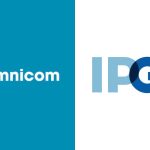Digital Marketing used to be the great disruptor and the great hope for marketers.
Its practitioners were called wizards or ninjas. Not many non-ninjas understood it.
Things have changed, and yet, not.
The average client or agency person knows more about digital than 5 years ago. And yet despite UTM, conversion goals, share of search, pixel tagging et al, the rise of digital has not implied greater clarity. Despite dashboards of data, many clients are groping in the dark.
And if you thought that was tough, it’s going to get worse.
Because of digital, the great disruptor, is getting, well, disrupted.
Here are 3 disruptions happening in 2021:
Disrupted by Apple & Google:
iOS 14 is Apple taking aim at Facebook with its IDFA (Identifiers For Advertising, random device identifiers attached to phones).
By preventing targeting of iPhone users, asking publishers to make consumers aware when they are being targeted and letting them opt-out, to protect privacy, Apple is sticking a knife into Facebook’s revenues.
More importantly, the web ecosystem will have to recalibrate the cost per click, cost per engagement and the conversion goals. This will dilute traceability and trackability, one of the key differentiators of the great disruptor, versus other media.
Google is also chiming in, vowing to stop supporting third-party cookies (tracing elements) from 2022. In January 2021, Google said it will make its alternative to third party cookies available for public testing in Q2 2021.
“Federated Learning of Cohorts (FLoC) … effectively hides individuals ‘in the crowd’ and uses on-device processing to keep a person’s web history private on the browser”.
Google claims FLoC will protect the privacy of users while providing advertisers with needed attribution data. Sounds like Googledegook? It’s the next level of disruptive confusion.
Disrupted by Ad Fraud:
20-50% of all ads served are fraudulent, depending on the source you trust. The World Forum of Advertising predicts ad fraud will become the biggest market for organised crime by 2025, worth $50 billion.
Furthermore, programmatic, a much-vaunted technology, is viewed by elite advertisers with skepticism. Unilever, P&G and others have cut programmatic spends and seen no loss of reach or sales.
Disrupted by Reporting:
As more dollars are spent online, great reams of reports are generated to justify the spends. These are not read much and are understood even less. Reports are, in the Shakespearean sense, “full of sound and fury, signifying nothing”.
Need of the Hour:
The digital ad industry needs to urgently take proactive steps:
- Be clearer and easier to understand, for laymen and non-experts
- Demonstrate clear ROMI, not just buying efficiency
- Tackle Ad Fraud and prevent the medium becoming more disreputable
- Use data to navigate the new Uncertainty caused by tech giants
The disrupted disruptor needs to disrupt its destructive trajectory.

Sandeep Joseph is the CEO and co-founder of Ampersand Advisory, a strategic media consultancy that was Campaign Magazine’s Malaysia Independent Agency of the Year for 2019 and 2020. The views expressed here are his own: you can debate with him at sandeep@ampersand-advisory.com
MARKETING Magazine is not responsible for the content of external sites.











